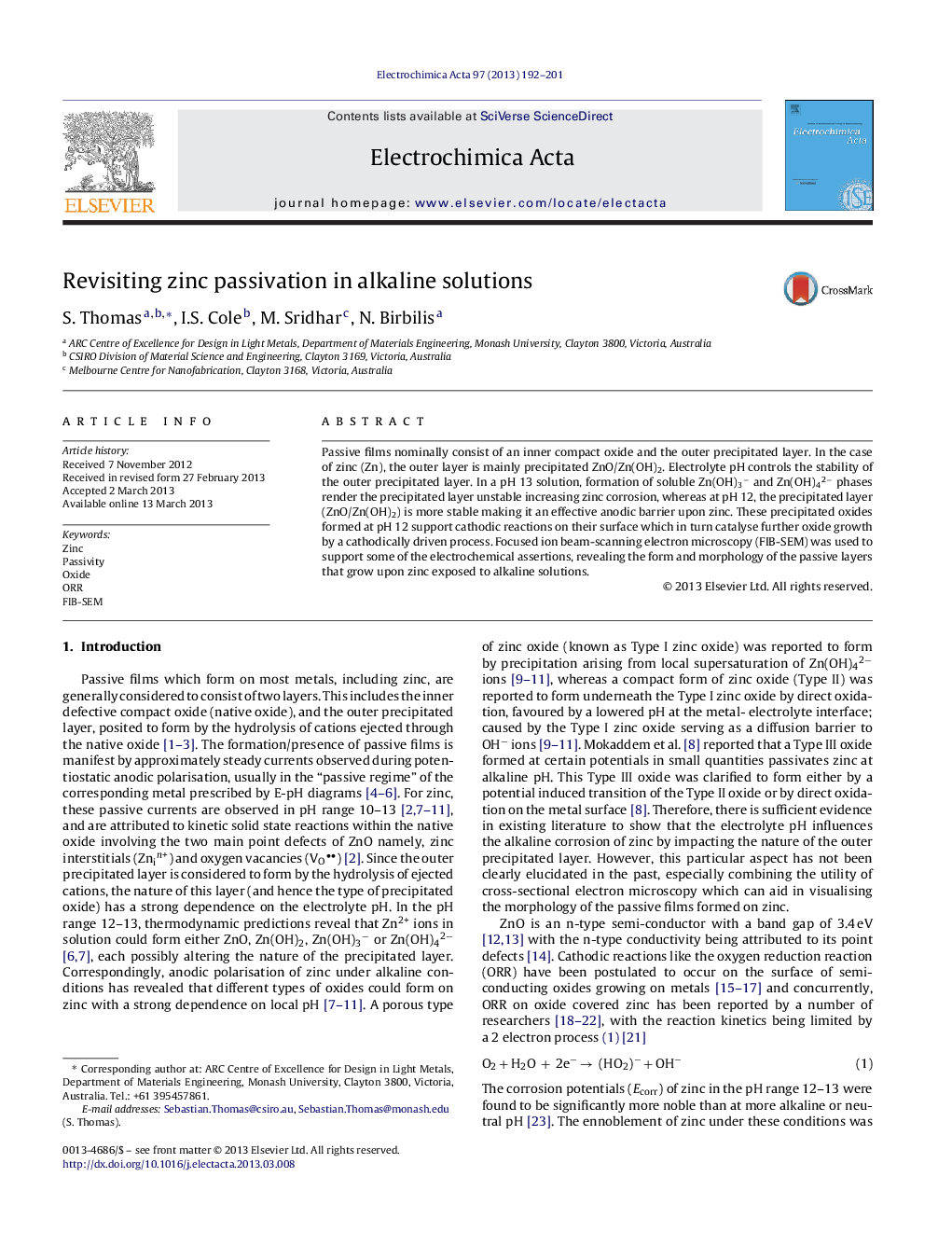| Article ID | Journal | Published Year | Pages | File Type |
|---|---|---|---|---|
| 186933 | Electrochimica Acta | 2013 | 10 Pages |
•Zinc passive films were characterised by electrochemical tests coupled with cross sectional FIB-SEM.•Passive layers at pH > 12 comprised of an outer precipitated layer and inner compact oxide.•The electrolyte pH influences the nature/stability of the outer precipitated layer and this impacts the passive state on zinc.•The precipitated layers on zinc at pH 12 support cathode reactions and catalyse oxide growth.
Passive films nominally consist of an inner compact oxide and the outer precipitated layer. In the case of zinc (Zn), the outer layer is mainly precipitated ZnO/Zn(OH)2. Electrolyte pH controls the stability of the outer precipitated layer. In a pH 13 solution, formation of soluble Zn(OH)3− and Zn(OH)42− phases render the precipitated layer unstable increasing zinc corrosion, whereas at pH 12, the precipitated layer (ZnO/Zn(OH)2) is more stable making it an effective anodic barrier upon zinc. These precipitated oxides formed at pH 12 support cathodic reactions on their surface which in turn catalyse further oxide growth by a cathodically driven process. Focused ion beam-scanning electron microscopy (FIB-SEM) was used to support some of the electrochemical assertions, revealing the form and morphology of the passive layers that grow upon zinc exposed to alkaline solutions.
Graphical abstractFigure optionsDownload full-size imageDownload as PowerPoint slide
